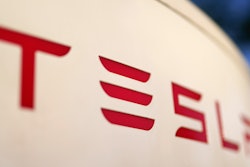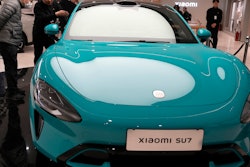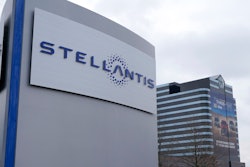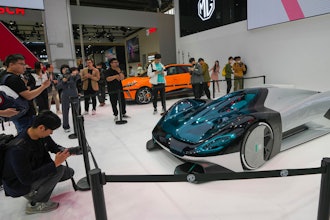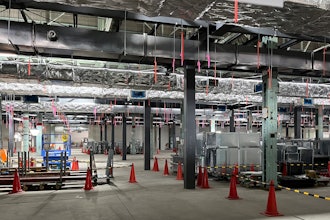From space, Norfolk Southern’s 20,000-mile rail system resembles a neural network and it increasingly works like one, too. The railroad has rolled out a big data system called Movement Planner, which helps intelligently direct the hundreds of trains that ply its rails through 22 states from the Atlantic coast to the Great Lakes and the Mississippi River every day.
Movement Planner, which was developed by software and transportation engineers at GE, is an example of using data to improve the efficiency of machines and infrastructure, and also help the environment. “This merging is transformational in terms of resource productivity,” says economist Brandon Owens, who works as the strategy and analytics director for GE’s ecomagination program.
Owens just published a report that explains how software and big data help companies improve the management of resources as diverse as oil and water. “We’re talking about savings that really add quickly because of the scale,” Owens says. “If we double productivity from 1 to 2 percent as we predict by using the Industrial Internet and big data to manage efficient machinery, we’re talking savings by 2030 of about a third of global oil consumption.”
Movement Planner, for example, takes logistical information such as the type of cargo and the urgency of delivery, and combines it with schedules, track grades, train movement and other data. The result is optimized plans that allow locomotives to run at higher speeds and more efficiently on existing routes without laying new tracks. The software can look up to eight hours ahead, for example, and figure out what the railroad can do to get a train back on schedule without delaying any of the other trains moving through the network.
Deborah Butler, Norfolk Southern’s chief information officer, told O’Reilly Media that since her company turned on Movement Planner a few years ago, it has seen a 6.3 percent drop in fuel usage and a 10 to 20 percent increase in velocity.
Such smart technology is sorely needed to get us closer to sustainability. Owens calculated that if we fail to get more efficient at moving, building and operating things, both materials extraction and energy consumption will grow by a staggering 80 percent by 2030. (If we improve energy productivity by 2 percent annually, that increase will be less than 30 percent by 2030.) Those figures track numbers from the Organization for Economic Co-operation and Development, which has estimated that without more water conservation and productivity improvements, the number of people living in areas under water stress will grow from 1 billion to 3.9 billion in 2050.
Such scenarios illustrate the idea behind GE’s ecomagination program. Since its launch in 2005, GE has invested $15 billion in R&D in “ecomagination” technologies like the Movement Planner, but also jet engines, gas turbines, wind turbines, locomotives and other efficient machines and systems designed to improve productivity and cut their environmental impact. The investment has so far fetched $180 billion in revenue for GE, and potentially billions more for its customers.
One of them, the Brazilian airline Gol Linhas Aéreas Inteligentes, has deployed another ecomagination big data system, GE Flight Efficiency Services, to optimize the flight paths of its jets. The technology, which Gol introduced five years ago, is saving the airline an average of 22 miles per flight and 77 gallons of jet fuel. That adds up to some $100 million in savings for the company, and an average reduction of 1,628 pounds of CO2 emissions per flight.
“The real winners in the business world will be the ones who integrate their hardware and IT software to improve their bottom line but also help the environment in the process,” Owens says. “The economics and environment align on this one because you don’t have to be focused on the environmental benefits to get them. We’re entering a world where we squeeze waste out of industrial systems while optimizing productivity.”
For more stories like this, visit GE Reports.





